17 Things Scarier Than Bears on the Pacific Crest Trail
As we learned from the absurd questions asked of Pacific Crest Trail thru-hikers, people are primarily interested in hikers’ thoughts on the “scary things” out in the wilderness. Basically: bears, mountain lions, and murderers.
Why are people so fixated on bears and murders? The last (and only) recorded death from a wild bear in California, Oregon, or Washington? A four-year-old girl in 1974. The last hiker killed by a mountain lion on the PCT? Never. The last time a person was murdered on the PCT? Also, never.
The idea that hikers should be afraid of bears, mountain lions, and murderers is irrational to the point that engaging is simply a waste of time. That’s right, you just wasted an entire minute of your life. But this is America, we have to be afraid of something. You’re right, anonymous reader, we do. And so now I present to you seventeen things scarier than bears on the Pacific Crest Trail.
1. Lightning
Bolts of electricity from the sky: the scariest thing on the Pacific Crest Trail, bar none. When it comes to “things that pucker your butthole”, the wrath of Zeus shits all over bears and cougars. It won’t matter if you are walking along an exposed ridge, fleeing down into a valley, or just sitting in your tent – all activities are terrifying in a thunderstorm. According to the National Oceanic and Atmospheric Administration’s (NOAA) website, “you are not safe anywhere outside” during a thunderstorm. Lightning strikes without prejudice, and if you get caught in a storm, in the middle of the wilderness, miles from shelter, then you will know its fury. Watch me being scared of lightning on the PCT here.
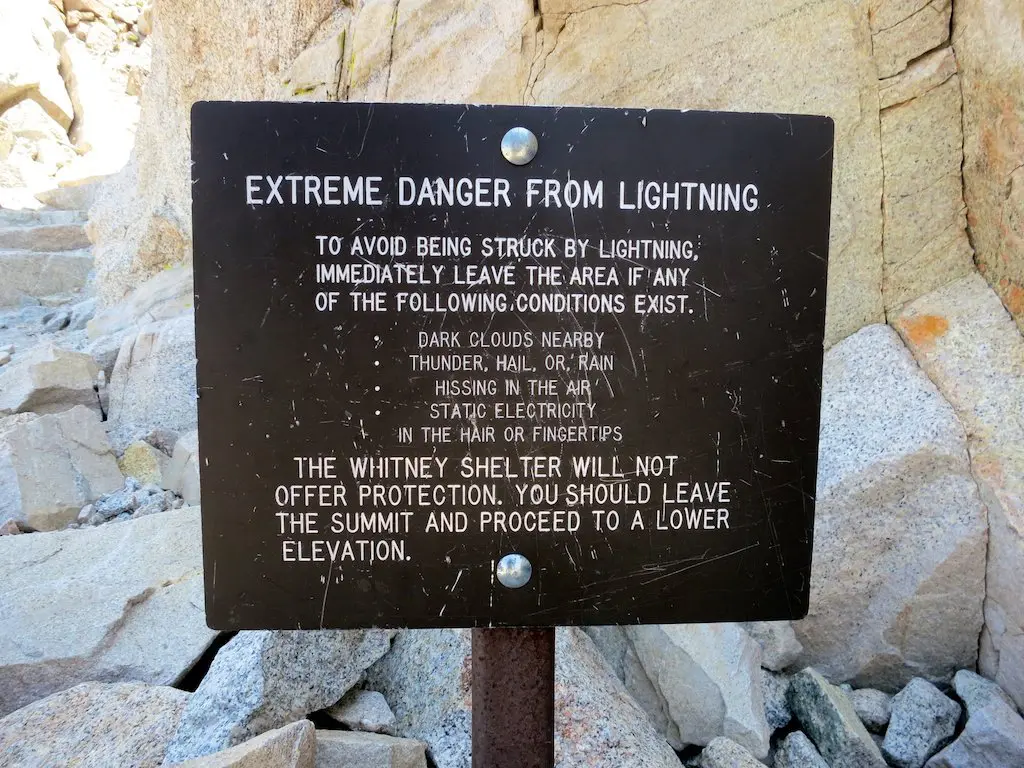
2. Unmarked Trail Junctions
The Pacific Crest Trail is relatively well-marked; however, hikers occasionally encounter unmarked trail junctions. Even with maps, these junctions can sometimes be challenging to decipher. If you are lucky, a hiker ahead of you will have marked the correct path with an arrow or cairn, but sometimes it falls onto you to decide the way to Canada (or Mexico). The miles following said junctions are always incredibly frightening. “Did I choose correctly? Is that water source ahead? If I am off-trail, that means no trail magic!” Eventually, you will stumble across a trail marker or a landmark and regain your confidence (or not and you will be forced to turn around. Despite having chosen the incorrect trail only three or four times, I was always 100% convinced that I had wandered off the trail by following unmarked junctions.

3. Bees
You will make a lot of new critter friends on the Pacific Crest Trail, but perhaps the most loathed of your newfound company will be the bees. I had never been stung by a bee before hiking the PCT; now I have been stung by four (and that number is small compared to many of my PCT friends). In Northern California and parts of Oregon, the bee population was not happy to have hikers around. Stopping for lunch in bee territory is a truly regrettable decision. I ate many meals while walking as a result of being driven away from my lunch spot by the bees. The worst part? The bees wait to appear until you stop hiking. Cheeky bastards.

4. Giardia
A word that hikers learn quickly on the Pacific Crest Trail, Giardia can take down even the most seasoned of hikers. Whether or not you can properly pronounce it, the symptoms are the same: diarrhea, flatulence, greasy stool that can float (difficult to diagnose when pooping in a hole), abdominal cramps, upset stomach, and nausea. This experience is terrible when at home, in bed, with a readily available toilet. In the wilderness, the agony endured by those unfortunate enough to come down with the parasite is something I do not dare imagine (likely akin to slowly pulling out your toenails with pliers).
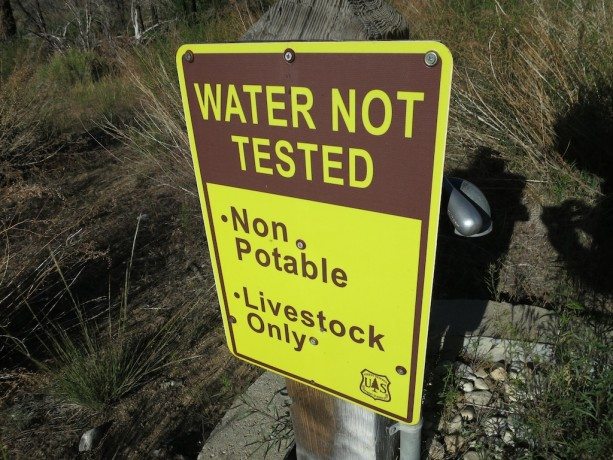
5. The Sun and Dehydration
Drink plenty of water and protect yourself from the sun’s rays. Sounds simple enough, right? Wrong. What sounds like two simple tasks can quickly become problematic (and even deadly) on the Pacific Crest Trail. Triple-digit temperatures, high altitudes, long stretches without water, and extreme physical exertion all make staying hydrated a constant challenge. Knowing nothing of the statistics, I would wager that more hikers die from sunstroke and dehydration each year than from all the other items on this list combined. However, the sun is a silent killer, and therefore, it is not as scary, which explains why it falls so far down the list.

6. Poisonous Plants
Yes, plants are scarier than animals. The Pacific Crest Trail is home to a number of poisonous plants that can cripple hikers who come into contact with them. In Southern California, hikers do battle with the infamous Poodle Dog Bush (remember, you cannot smoke it). Then, in the lower elevations of Northern California, hikers contend with a poison oak-enveloped trail. Sure, avoiding a couple of plants here and there is no problem, but sometimes the trail is literally overgrown with these plants, and avoiding them for miles on end can prove mentally and physically exhausting. Just accept that you might end up itchy (and don’t touch your eyes or genitals).

7. Butt Chafe
In the realm of conversation topics, the Pacific Crest Trail’s social faux pas are few and far between. That being said, chafe, and more specifically butt chafe, is scarier than any bear or mountain lion could ever be. I witnessed many a strong hiker taken down as a result of bleeding butt cheeks. Butt chafe can strike at any moment, and no matter how well you think you wiped, it can (and will) still find a way to ruin days of hiking for you. The one and the only cure for butt chafe? Sleep. Good luck out there.

8. Bicyclists
Despite bicycles being forbidden on the entirety of the Pacific Crest Trail, some people believe themselves to be above the law (me, for example). These people ignore the PCT’s prohibition of bikes and endanger not only themselves but hikers as well (that guy who almost hit me in Big Bear, for example). Hikers, expecting only to encounter fellow hikers and equestrians, can quickly be taken out by bikers flying around corners or barreling down descents. I typically hike with music blasting in both my ears (usually J-Pop) because why listen for bicyclists who are not supposed to be on the trail in the first place? If you encounter bikers on the trail and can avoid being hit while doing so, then do the polite thing and refuse to yield.

9. Mosquitoes
Mosquitos may not themselves be deadly, but they can certainly make you want to kill yourself. My time in the Sierra, when not spent marveling at indescribable beauty or bathing naked in mountain streams, was oftentimes spent fleeing from vicious swarms of mosquitoes. Without exaggeration, I can say that there were times when if I dared to stop hiking for even a moment, hundreds of mosquitoes would swarm around me, biting every inch of exposed skin. Fortunately, you can out-hike the mosquito swarms, but as soon as you stop for water, to make camp, or, god-forbid, to poop, they will be all over you. And what’s that? Is your shirt thin enough for them to bite through? Time to finally put that rain gear to use. You should probably have used Permethrin before heading out.

10. Cars
Cars? Yes, cars. The Pacific Crest Trail itself may be free of motor vehicles. Still, thanks to the occasional road walking adventure, the many highway crossings, and the number of hours hikers spend hitchhiking, there exist plenty of opportunities to be struck by a vehicle. As ironic as it may be to be hit by a car while hiking the PCT, it is a real possibility that hikers need to be aware of. And yes, PCT hikers have been killed by vehicles in the past.

11. Off-Leash Dogs
You are just hiking down the trail, minding your own business, when all of a sudden: WOOF WOOF WOOF WOOF WOOF! From around the next bend, an angry-looking dog comes charging at you, barking its head off. The dog’s owner? Nowhere to be seen. You pucker your butthole (hopefully you don’t have butt chafe) and hope that this encounter will end well (i.e. you won’t have to stab a dog in the throat with your trekking pole).
This happens quite often on the PCT, and for reasons I fail to understand, people who have dogs that “don’t really get along with strangers” insist on keeping them off-leash whilst walking in the wilds. How many times did a bear bite me on the PCT? Zero. How many times by a dog? One. Point? Bears.

12. Man-made Hazards
Asbestos, high-voltage cables, and unexploded military ordnances are just a few of the things hikers will have to contend with on the Pacific Crest Trail. Wait, did you say unexploded military ordnances? Like bombs? Yes, I did, and yes, like bombs. As if hikers didn’t have enough to look out for already, man’s encroachment upon the wilderness and the trail has made hiking the PCT more treacherous than nature intended. Watch your step out there, hiker trash.
13. The Boogie Man
If you are afraid of the dark now, wait until your first night alone on the Pacific Crest Trail. No matter how confident you are during the day, once nightfall comes, the trail belongs to the darkness. The boogie man lurks at every campsite, and no matter where you try to hide, he will find you. He’s responsible for the howling wind, the unnerving noises in the bushes, and the mysteriously disappearing tent stakes. You are being watched.
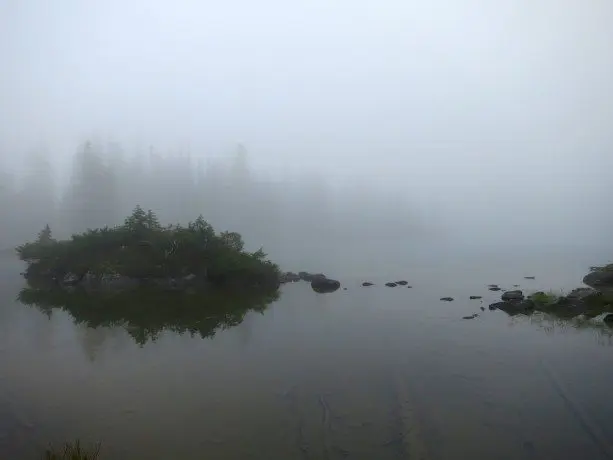
14. Snakes
On day one hiking the Pacific Crest Trail, I came across the first of many rattlesnakes I would eventually meet along the trail. How many did I see? I stopped counting after the first twenty. Some hikers claimed not to have seen any snakes on the trail, but this does not mean they were not seen by any snakes. You are lucky to see some bears, and you are a celebrity if you spot a mountain lion, but you will be the minority if you do not encounter any poisonous snakes along your way. Remember that they are just one of many desert murders.

15. Cows
The Pacific Crest Trail passes through numerous miles of land used for cattle grazing. Giant, beastly, genetically enhanced cattle. Few things rattled me more during the night than the sound of some huge cow crying out in what I can only assume was sexual frustration, very near to my tent (everything sounds closer in the darkness). More than once, I had sketchy encounters with cows refusing to move out of the trail, and more than once, I was legitimately frightened that an angry bull would run me down. Cows may be big and dumb, but sometimes big and dumb can be a lethal combination (like that stupid red dog).

16. Snow
Hikers aim to enter the Sierra late and pass through Washington early to avoid yearly snowfalls, but the timing of many a thru-hike does not align with the weather. Snow can make those unmarked trail junctions an impossible mystery, and can quickly cover hiker footprints or even the entire trail. Waking up to a campsite covered in snow can be terrifying in itself, and without the proper equipment, hikers can quickly become trapped out on the PCT. At least there will be plenty of time to construct a massive snowman while awaiting snowmelt (or rescue).

17. Poop
Coming in last we have poop. Cow poop, dog poop, horse poop, hiker poop – it’s everywhere. Just accept it, you are going to come into physical contact with poop on the Pacific Crest Trail. It does not matter if you are stepping over cow pies in the middle of the trail, trying to find a barren piece of land to pitch your tent, or searching for an unspoiled patch of earth to deposit your waste, you will eventually come face to face with poop. You might as well embrace it.

Conclusion
But wait, where are bears, mountain lions, and murderers on the list? They aren’t on the list! Why? Obviously, you have not been paying attention. Despite what is said here, the Pacific Crest Trail is not a scary place. What frightens people about the PCT and the wilderness is the unknown, but the unknown should instill excitement, not fear.
I felt safer in the wilderness than I have in many cities across the world. Times mugged on the PCT? Zero. Times mugged not on the PCT? One. It’s math, people. Remember, you are the crazy people out in the wilderness.
Still not scared? Check out: 11 MORE Things Scarier Than Bears On The Pacific Crest Trail.
Affiliate Disclosure: This page may contain affiliate links, which means I may receive small commissions for purchases made via these links at no additional cost to you. This helps pay the bills and keep the site up and running. Thank you for your support!
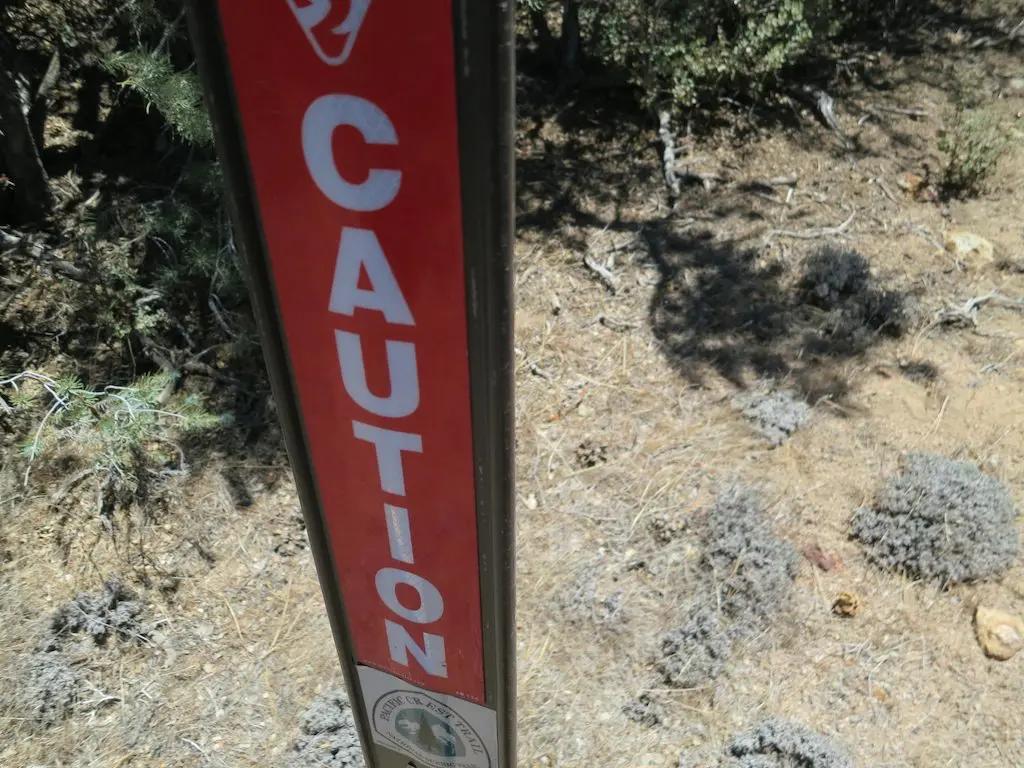



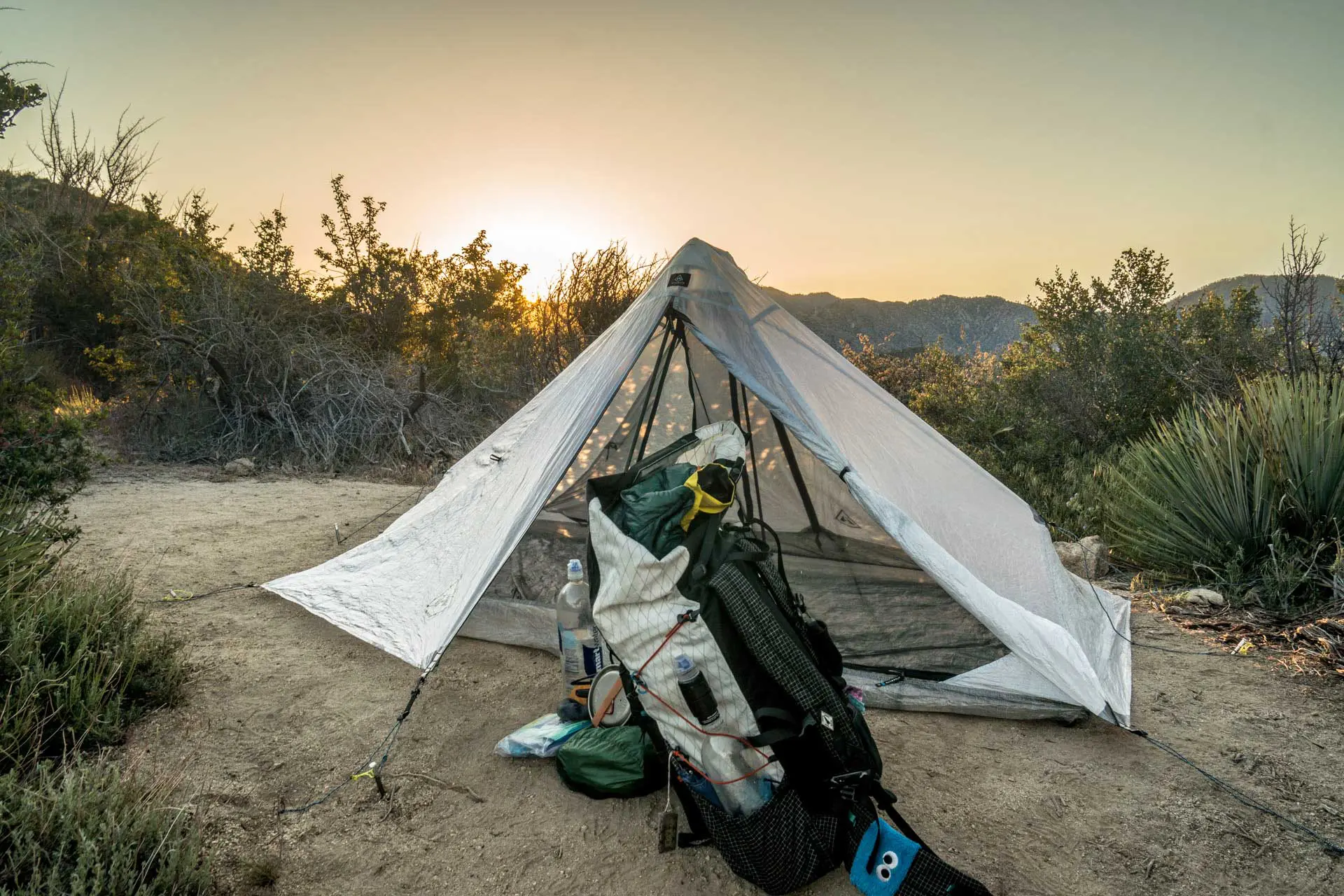
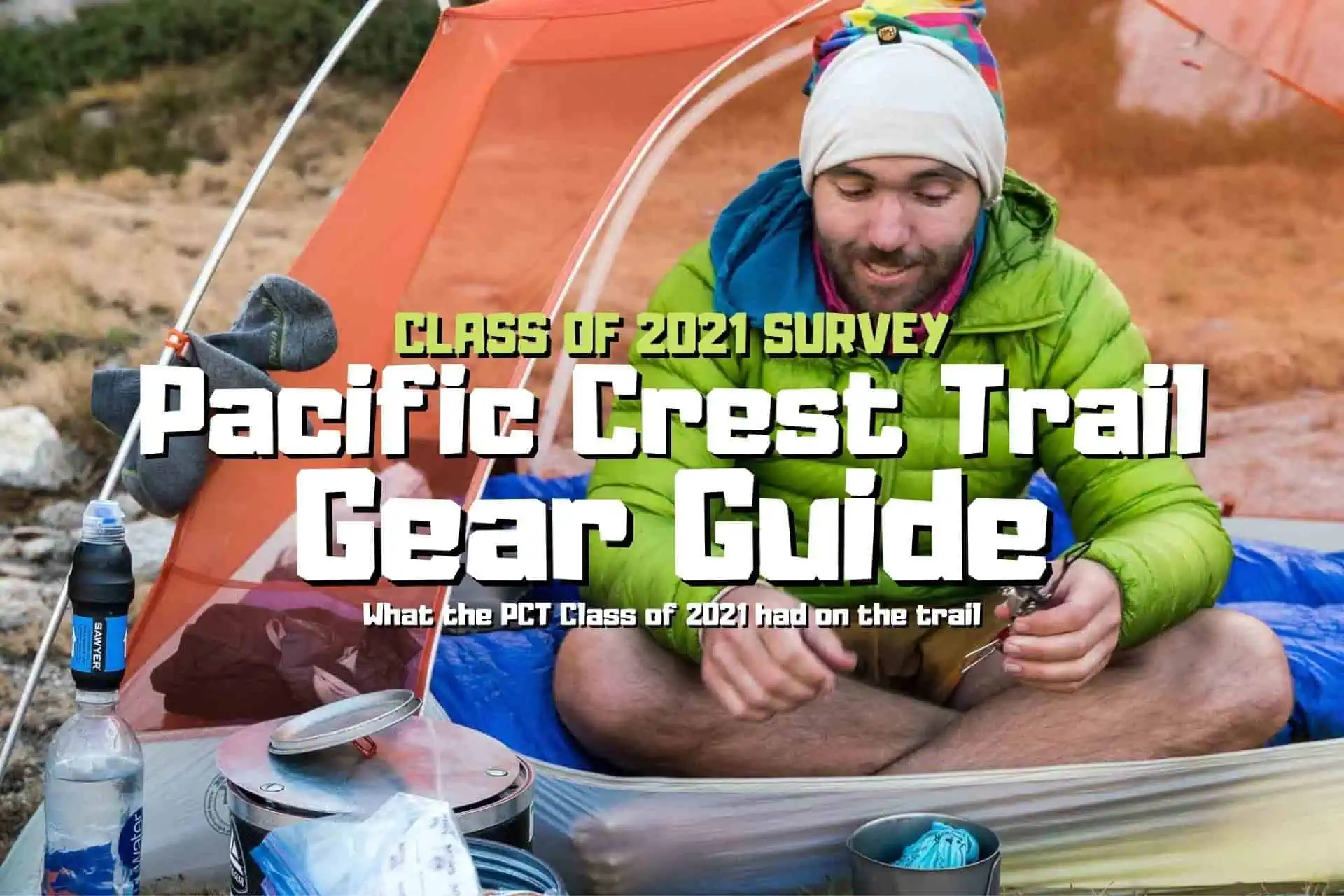
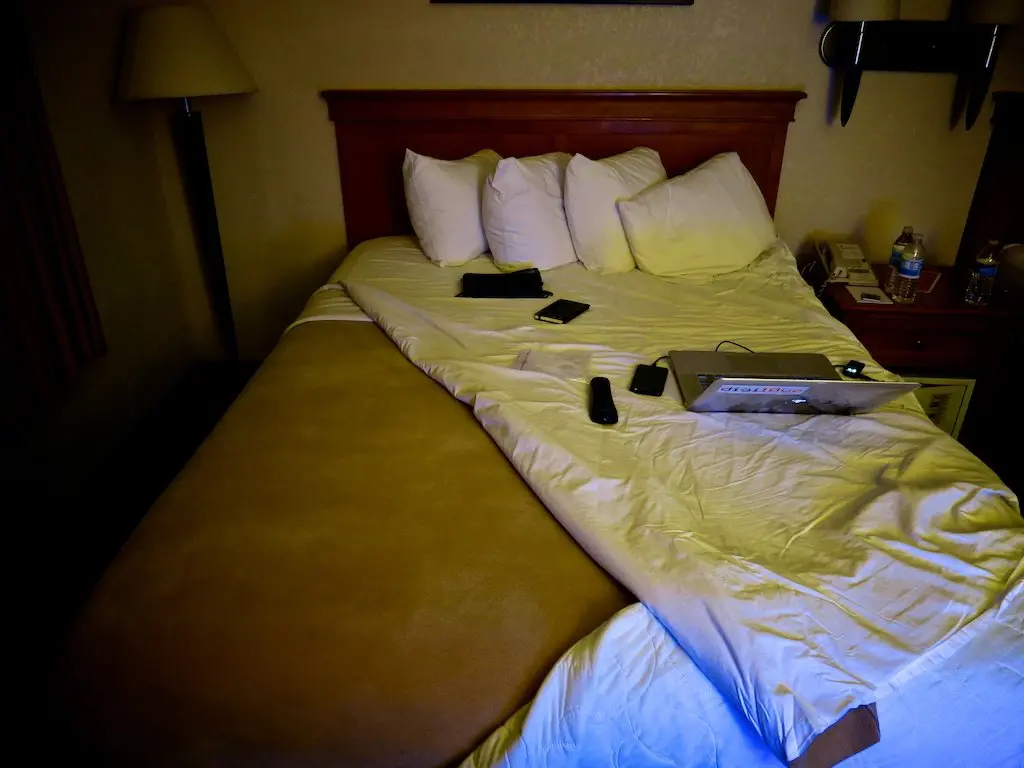
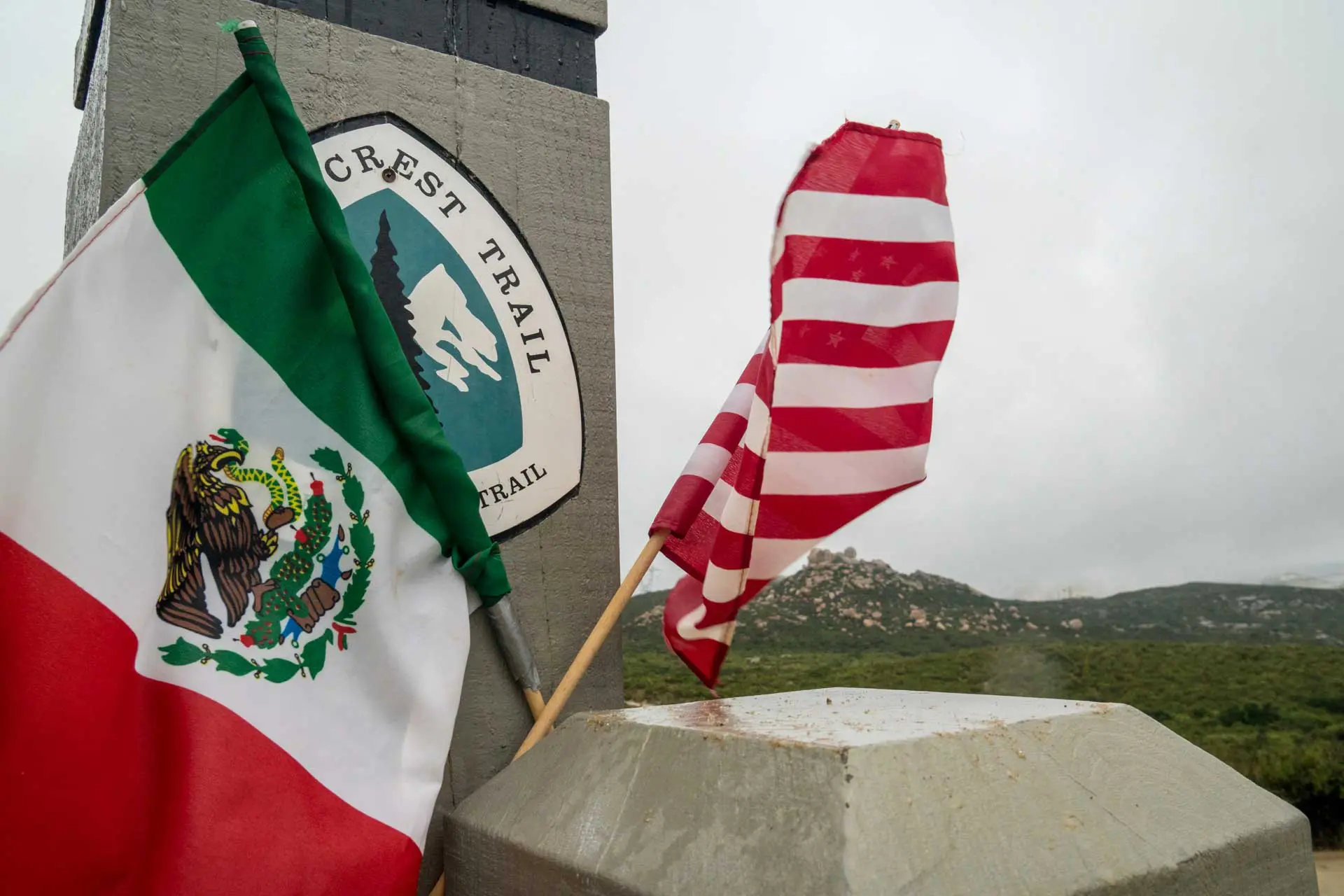
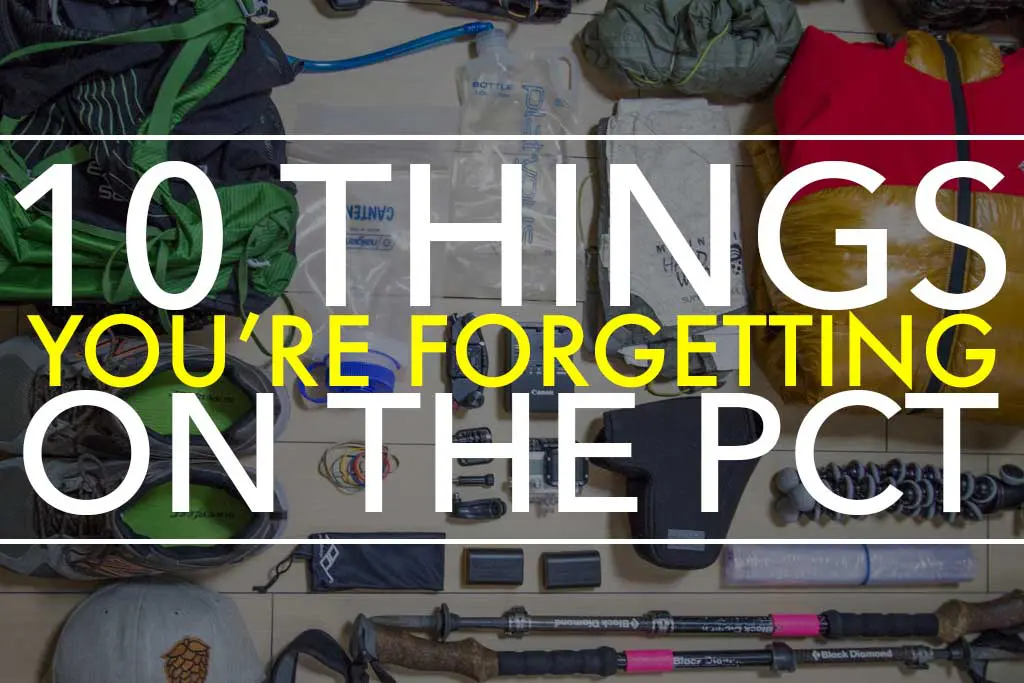
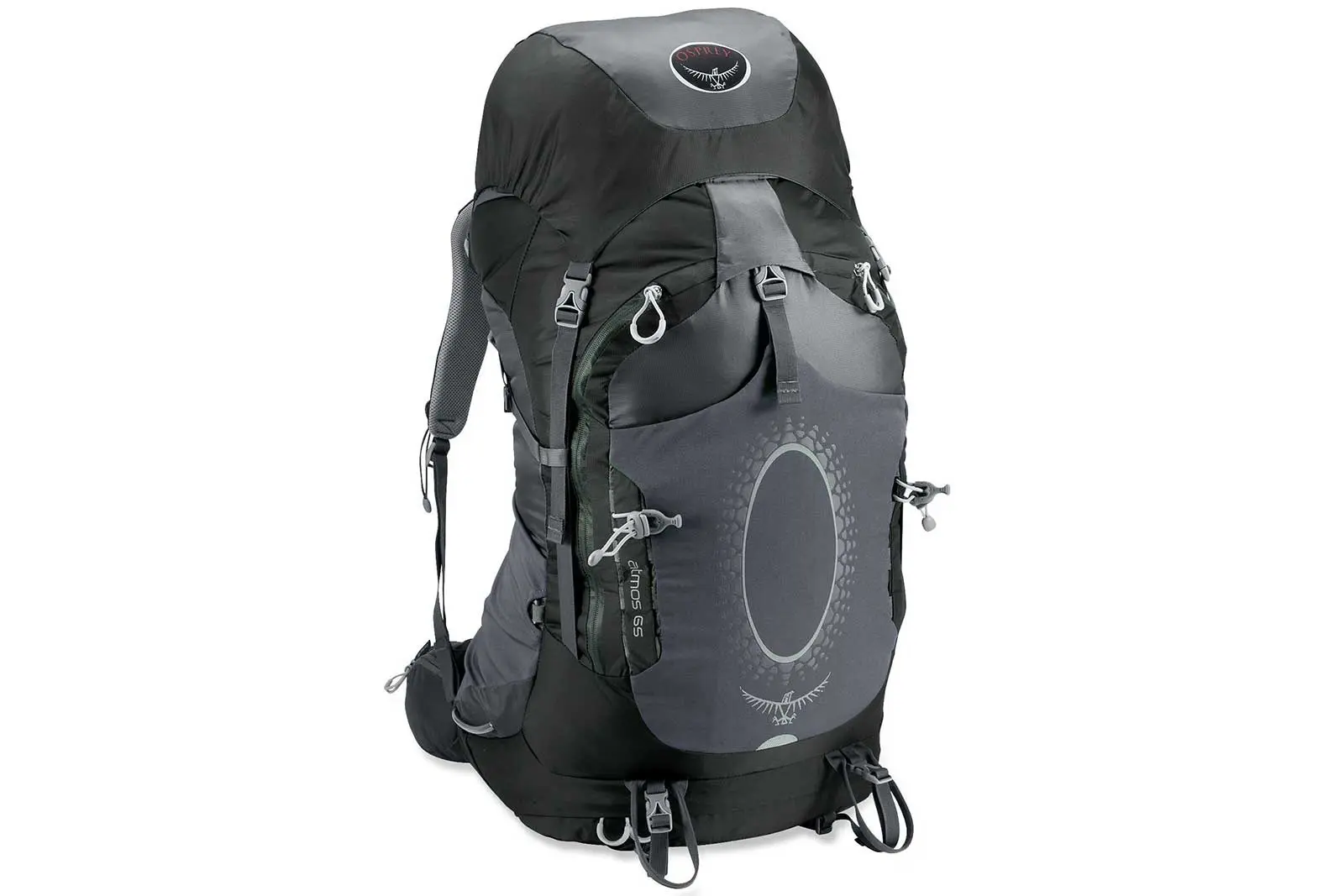
You forgot sexual assault! Want to know the numbers…
Wildfires. In the last several years large late-season wildfires in northern Washington have closed sections of the PCT and ruined the plans of many hikers so close to the end of their journey.
Lightning. For my 40th (that one hurt) I did a 10 day hike out of Mammoth and there was a thunderstorm every afternoon. Where to put up the tent??? Later I learned two men died that week, having taken shelter in a metal hut. Di not go near metal in lightning storm.
Funny stuff, and mostly so true!
I’ve seen that Mt San Jac post full of trail signs on #2 and thought the same thing…where did that PCT go now?
One more missing killer is dead falls, or widow makers as they are called if you happen to be married. We’ve all seen them across the trail, mostly with chainsaw cutouts so we don’t have to hike around them. We lost a PCT hiker to one in 2019 as he was just about to cross a small bridge.
Up on the alternate PCT trail that takes you by Crater Lake is a dead fall that could have taken out a bunch of hikers or campers all at once. It fell in four directions, and all four main trunks were close to a hundred feet long! Yes, it was right next to the trail.
And regarding #3, I could be wrong, but I thought those dirt bees didn’t sting. We once had a flight park dog we found living up on the local hill by our hang glider launch, and she became the custodian’s pet. She just loved to snap bees out of the air if they flew too close, so we surmised she must have been living on the dirt bees up there before she found a home with us. Stinging honey bees must have been like swallowing extra hot chili peppers to her, but she kept going after them!
Also scarier than bears are alien encounters. Even the Boogie man worries about being abducted. Being dissected while still alive aboard a UFO has to be a terrible way to go. But why was I so intent on mounding up my mashed potatoes just days before I visited Devils Tower, and why was the UFO ride ticket booth closed that evening? I can only guess they were busy over on the PCT that night.
Keep those scary reasons coming!
Aliens.
thanks Mac! I know it’s 2021 but I am from Brazil and my experiences in Colorado were: BE FAR AWAY FROM BEARS AND MOUNTAIN LIONS hahahaha so this was a very nice and well written article for us! O hope my butt will be safe as well and fuck off snakes hahaha
all the best mate!
But did you see any bears and mountain lions?!
Those weren’t bees, they were yellow jackets and they will attack and sting quite casually, they need no provocation.
They sound delicious.
I get afraid, not so much about the spiders, the bears, the lightning, the avalanches, but the BOOGIE MAN ! It’s a worthy belief to bring up.. being a Native American to the North American South West, I am well aware of the Boogie Man. It is a Lost Spirit that needs It’s direction. An Unsettled Spirit. There are sacred places and I am sure along the way alot of these magical places were inhabited by ancient ones. Remember to tread lightly to avoid the BOOGIE MAN along the way.
I think you might enjoy this post as well: https://www.halfwayanywhere.com/trails/im-afraid-of-the-dark/
I love you for this, I feel like nobody talks about their fears and overcoming it enough. THANKS!!
Perhaps a bit of an overreaction?
What about Pack Wheels for backpackers, are those allowed on the trail?
I would guess yes, so long as it isn’t expressly forbidden in a particular area or trailhead (but this is only a guess).
thanks for the great info
You’re welcome, David!
When you were on the trail did you ever problems with wildfires, and if so how did you handle them? If you did not how would you handle them in that situation?
also will I see rattle snakes on the Oregon Portion of the PCT from Section B all the way to the Washington border?
I saw no rattlesnakes during that section of the trail, but rattlesnakes do live in Oregon so there’s no promising you won’t run into one.
Thank you for the help I really appreciate it! I will probably have more questions as I get closer to the trip.
I never had problems with wildfires, but I encountered them mostly in Southern and Northern California. If the trail was open, I walked. If it was closed, I detoured.
Awesome article, and comical too.
How long was your journey and what made you hike PCT by yourself?
My journey was 4.5 months, and I hiked it alone because I couldn’t find anyone to go with me. However, in retrospect I am very happy that I did it alone (and would choose to do so again should the desire arise).
You are fantastic … Hope to read much more of your info. Mountain hikers hoping to hike the pct may 2015.
May 2015? You’re a little late, but maybe I’ll catch you out there in 2016!
Hilarious! I learned today that I am a celebrity because I saw a mountain lion near mile 500 in 2013. That’s all burned down now though and the mountain lion is probably dead. SO WE ARE SAFE! BUT! I was reminded the other day: mosquitoes kill more people than any other animal out there.
But what about humans?
Touché.
you should be writing for some big newspaper somewhere.
I’m happy to hear your already in the process of finding someone to take me :P
I posted this blog of yours on the PCT page today and it has exploded with likes and comments like I have seen only a few times before. We all really enjoy your commentary specially since we have been where all this takes place before. Thank you for sharing your hard earned experiences with us. good night.
Number 11 is exactly why I carry bear spray (or as I like to call it DOG spray), nothing worse than being mauled by some irresponsible owners dog. I speak from experience and have nerve damage in my right hand and scars up my arms. I’ve been hiking (on and off trail) through the Northern Cascades for the last 12 years and have had many of Bear encounters never once needing to use my DOG spray; just grateful to see them flourishing in their habitat. The same cant be said for “unleashed” dogs, spray first ask questions later that’s my motto. I don’t let them get close enough to use my trekking poles that was a lesson learned the hard way. Now I don’t hate dogs (I have three Pitt-bulls one a rescue), exactly the opposite but nothing makes my rectum pucker faster then a “unleashed” dog running full throttle at me. Great read bro will be doing the Oregon & Washington section in July and like always DOG spray will be at my side.
This is probably the best justification for carrying bear spray on the PCT. Enjoy OR/WA!
My neighbor’s VERY FRIENDLY dog was sprayed by someone just like you last year – spray first, ask no questions and offer no apology. That poor dog suffered for hours from an animal abuser like yourself!
I suppose I should make myself very clear before some choose try and demonize me. The spray I use is not even sold as a bear spray with the 2% capsaicin content. In my own mind I find very little reason to waste ones money on such a product, no rather i’m to cheap to invest in such a large, heavy product. I don’t know that it is even legal to use that stuff on anything other than Bears or that its more effective than regular pepper spray. I am more keen to a product sold by MACE known Mace Muzzle Dog Pepper Spray in witch my mailman turned me onto. WHY? Because I have fallen victim to people’s “unleashed” supposedly very friendly dogs. I put high emphasis on “unleashed” Dogs because in the state of Washington there is and has been for many years a leash law. Yet for reasons not known to me people think their loyal companions will not try to ward off a complete stranger; call it naive, ignorance or what ever you will, but never have I blamed the dog for his actions but he is always the one to pay for his owners mistakes. I don’t spray as a means to invoke some demented pleasure from the dogs pain, it is more of a self defense mind state where in I am not a chew toy.
Now while I do spray first this is true of any “unleashed” dog, I always make it a point to confront the clueless yet soon irate owner. No matter how uncomfortable the argument, Why did you spray my dog? I have heard at least 10 times to which my response is always, Why wasn’t your dog on a leash? Then the demonizing begins trying to make me out to be the whole problem in the first place all the way down to getting the authorities involved. Yet never having my spray confiscated nor spending any time in a cell let alone never had to pay a dime for spraying a dog and I must add never being demanded to apologize for spraying a unleashed dog. Now the same cant be said for the irresponsible owner who even knowing the laws themselves decided to just leave the leash in their car or at home or on their pack, it all just back fires in in their face when they are required to leave the park or are issued the citation for not abiding with the leash laws.
“If you get to thinkin’ you’re a person of some influence, try orderin’ somebody else’s dog around.”
– cowboy wisdom
Please stay away from the forests of the eastern Sierra and anywhere else where dogs ARE allowed off leash.
I hike with my dogs off-leash but they are under voice command and I put them on leash before they are allowed to accost a stranger.
Please continue to stay away from common sense.
Maybe your neighbor’s very friendly dog should’ve been on a leash before it was allowed to approach a stranger.
Dogs are allowed off leash under voice command where it was attacked. It was walking up the trail, not running in any attack mode. Hikers, horses and dogs legally share this trail.
Yeah, I’m sure someone just decided to run up to a perfectly calm dog and mace it in the face for no reason. If you say so, lady. Keep your dogs out of other peoples’ personal space and you won’t have anything to worry about.
I have zero problems with spraying a dog with pepper spray.
Listen. To some of you folks out there shaming RL for spraying a dog that even appears to be on the attack, it is YOUR f***ing responsibility to make sure YOUR dog does not harm people, regardless of whether they are allowed to be off leash or not. You unleash your dog at your own risk. I have lived around highly trained search-and-rescue dogs my whole damn life and we rarely let them off leash in any place where there was a high probability of encountering other people. Not only for the safety of other people but also the safety of our dogs. I love dogs but if your dog is approaching me with the viciousness of a grizzly bear then I WILL spray that mother f***ker without thinking twice about it. Between your dog and me, one of us is going to get hurt, and it ain’t going to be me. No one is obligated to risk his or her safety because you have this harmonious idea in your head that your dog should be able to roam free out of your sight simply because the sign says you can. GTFO. You don’t own that trail.
Amen!! Of course Sue can’t respond to your reply because it’s CORRECT! Poor Sue just doesn’t understand that it’s NOT EVERYONE’S elses responsibility to watch her dog for her. After all….it’s about HER needs right? LOL
Then it should be leashed.
Your neighbor is the animal abuser for not keeping their dog on a leash. Your neighbor caused their dog’s pain.
I carry a gun, more effective.
Conversations like this are a magnet for gun nuts itching to kill something or somebody. In a saner society, it’s illegal for sociopaths like “Ann” to walk around armed with lethal weapons. When I was a kid in the 70s and 80s(and I am an American) nobody walked around with a fucking handgun on him; it just wasn’t done–that was strictly for high priced bodyguards and TV private investigators who had a “concealed weapons permit.” Your dad might have a hunting rifle in the closet, but he didn’t walk around with a handgun. It’s crazy what this country has become.
Well I’ll tell you what, you just keep believing a cop will jump out of your phone the instant you dial 911 rainbow keyboard warrior. You appear to have a great fear of firearms. When I was in High school, we had rifles in our Easy Rider Rifle racks in our pickups parked outside the school and didn’t have to worry about them being stolen. The principal always made us stay after because he wanted to look at them to see if they were as good as his. You still have a lot of growing up to do if you were a kid in the 70’s. Be sure to look under your bed tonight, sociopath Ann just might be under there with an ASSAULT WEAPON.
But remember when this is a website about hiking?
Tell that to the rude Daniel. All it took was mentioning the word “Gun” to trigger him.
Who ever wrote this doesn’t have a clue: For 95 out of 100 single hikers that do see mountain lions it’s last thing they see on God’s green earth! And nobody ever finds their bones until after coyotes dig them up.. And by then their is no forensic evidence to connect their deaths to mountain lions.
So what are you basing your stats on if there is no forensic evidence left?
Really? When was the last hiker killed by a mountain lion?
Great article! Did you ever come across someone who got hantavirus? (it’s okay. I had to look it up too) Or red itchy bumps that could be a number of things including, but not limited to: scabies, bed bugs, poison oak, or hives from just plain dirtiness?
Never came across anyone who got hantavirus. I did know people who got poison oak and giardia (neither of which is very desirable). As for the dirt, everyone is filthy at all times.
And just read the 11 more things scarier than bears — love it!
On my first LD bicycle trip in 1969 my buddy and I got butt chafe something fierce. We were 18 and 14 respectively, and didn’t wash well for sure. I remember having trouble walking for a week! Since then I picked up my dad’s technique of powdering down with Mexsana. That stuff works! I’ve biked all over the world and I always take it along. I pop the top off of a “travel” size Gold Bond powder, dump that in the trash and refill with the Mexsana from a larger container. [I’ve never seen Mexsana in a “travel” size.] No chafe for me.
Here’s the scoop on bicycles. The popular idea that it is illegal to ride a bike anywhere on the PCT is in fact questionable outside of Wilderness, and 60% of the trail is outside Wilderness. (No, the PCTA won’t tell you this. It would rather you not know. Why that is, no one outside the organization seems to know.)
True, the Forest Service (FS) says having or riding a mountain bike on any part of the PCT in its jurisdiction is illegal, except for a tiny stretch of maybe 0.1 miles near Timothy Lake, Oregon, where you can have your bike but have to walk it. Anywhere else, the FS publicly states, even walking your bike is illegal. (What it privately believes is less certain.)
The basis for that belief, however, is a 1988 typewritten closure order, of the type usually used for a temporary problem like a dock with a loose plank, issued by three high-ranking but local FS employees. The closure was not preceded by any public input but was decided unilaterally in three employees’ offices. So there is a view that the order is unlawful under federal law that requires public comment before a rule like this can be implemented, and mountain bikers increasingly doubt its validity. Accordingly, with each passing year you’re more likely to see mountain bikers on the PCT.
The only way to find out for sure if it is illegal outside of Wilderness is if someone is ticketed for mountain biking on the PCT and challenges the citation in court, on the basis of the argument that the closure order is invalid. Citations seem to be exceedingly rare, however; the Pacific Crest Trail Reassessment Initiative group, which advocates restoring bicycles to the PCT outside Wilderness, says it hasn’t gotten a confirmed report of anyone getting one in years, if ever.
So, if you see a mountain biker on the PCT, keep in mind that she may be lawfully there. And, if you attempt to block her passage, you may be guilty of false imprisonment, at least in California. It’s not worth the risk of getting a criminal record to stop someone from doing something that, unless she is riding recklessly, may offend you but is not really harming anything.
More info available on the PCTRI website: http://www.sharingthepct.org/history (This blog post contains this poster’s view, not necessarily PCTRI’s.)
Just finishing Cheryl Strayed’s ‘Wild’ so great to see how imaginary fears stack up against the actual facts! Great article, thanks!
You are by far the best writer about through-hiking I have ever read! This is both hilarious and useful.
I refuse to believe that there is more poop on the PCT than there is on the trails I hike in the L.A. area, though — dog, coyote, horse, and human, it’s one big poopstravaganza wherever you step.
Thanks Thalia! Poop is in fact everywhere, and some of those trail s you hike in the LA area may even be a part of the PCT! It’s best to just accept you will be covered in shit one way or another.
answered all my questions and laid my fears to rest.
Happy to help!
Also, for those of you morbid folks who must know the actual case studies of the people who die, get killed or severely injure themselves in the wilderness areas about the PCT and elsewhere, The Alpine Club annually published the field reports in “Accidents In North American Mountaineering.”
You can get your copy ,to keep on your nightstand, for a little light reading before bed, by going to their website. Be Safe out there!
The only time you have to worry about a black bear is if you get between it and it’s cubs…they do get a little pissed if you mess with the kids. Forget about cougars, it’s highly unlikely that you would ever see one.
But the cougars are seeing (stalking) you!
I’d much rather face a bear in the woods than a doctor in a hospital. Talk about a miserable way to die.
…what about facing a bear in a hospital? AND the bear is licensed to practice medicine.
I loved this article – yay for the author – the photos were awesome, so well written/presented.
Thanks, Sandra!
You might also enjoy the following post if you haven’t seen it yet.
https://www.halfwayanywhere.com/pacific-crest-trail/11-more-things-scarier-bears-pacific-crest-trail/
There are many ways to die but being eaten alive by a wild animal like a bear, mountain lion or shark tops my list of ways I absolutely do not want to go out. Strike me with lightning, kill me with bacteria or die of hypothermia, fine. If I have to go, just don’t eat me alive. That’s why I’m still afraid of bears and mountain lions and always will be. There may not be recent deaths from these carnivorous on the PCT, but there are in the wilderness. Once is too many for me. I’ll be packing my bear spray without reservations. BTW, I believe hypothermia is the most common form of death in the wilderness and I don’t think you mentioned it.
The most common form of death in the wilderness is falling. Good luck with the bear spray!
The strait and narrow drop to death in the canyon that I did not know existed, so close to my home near the cajon pass in California, until last week. Had me shaking, and gave me the extra boost of energy I needed to get the hell off that mountain!
I knew someone that worked as an EMT for 25 years on the California Freeways. He said he would much rather die by the jaws of a great white, a bear, or a mountain lion, than by the jaws of GM, that he spent his life trying to rescue people from. But if you perfer the jaws of GM you are in luck, you have about 500 times more of a chance of it happening than death by more natural jaws!
What is a GM?
Either a Game Master or General Motors
Don’t know about murders… but there have been plenty of deaths on the PCT whether it be from accident, weather, suicide, stupidity or just natural causes. People can and do die out there. But then… they can and do die everywhere.
“They can and do die everywhere.” – words of wisdom, Ivy.
Fantastic article! Thanks for giving me a morning giggle. It definitely deserves an honorable mention link on my PCT resource page, gotta keep things real. What happened to the Disneyland PCT vision? all pristine, perfect, without risk? Golly Gee :)
I have often described the PCT as “the best thing ever”, but I have also described it as “the worst thing ever”. Both statements are entirely true.
Best. Article. Ever. This made me laugh while opening my eyes. I’m ashamed to say, I’ve been dreaming of mountain lions, having seen one before -whilst in a car though, mind you. Nonetheless, this article brings me back to earth. And I really hope I don’t get giardia or butt chafe when I attempt the PCT next year. Everything else I can handle but a burning butt hole is one of my pet peeves whilst hiking. :) But at least I’m somewhat mentally prepared now. Thank you!
It’s a good thing you are now prepared, you can never be too ready to face the dangers of the chafe.
EVER????